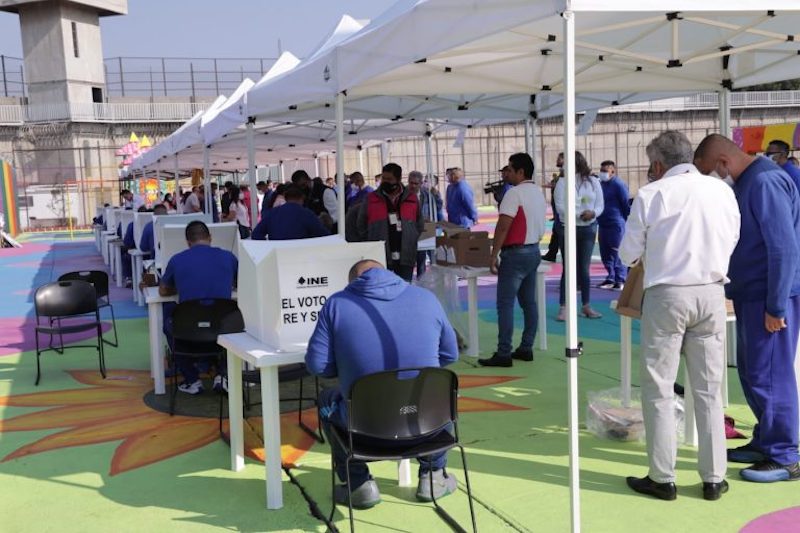
02/19/13 – According to a study published in 2012 by the Human Rights Department of the Ministry of the Interior (Subsecretaria de Derechos Humanos de la Secretaría de Gobernación, SEGOB) and the National Commission to Prevent and Eradicate Violence against Women (Comisión Nacional para Prevenir y Erradicar la Violencia Contra las Mujeres, Conavim), female homicides in Mexico have increased dramatically, particularly in nine states in Mexico: Chiapas, Chihuahua, the Federal District (Distrito Federal, DF), Durango, Guerrero, Michoacán, Oaxaca, Sinaloa, and Sonora. The National Study Concerning the Sources, Origins, and Factors that Produce and Reproduce the Violence against Women (Estudio Nacional sobre las Fuentes, Orígenes y Factores que Producen y Reproducen la Violencia contra las Mujeres) was presented to the Commission of Human Rights and Gender Equality (Comisiones de Derechos Humanos y para la Igualdad de Género del Senado de la República) on February 13, 2013. (To read the full report, click here). Lía Limón, the assistant secretary for Legal Affairs and Human Rights (Subsecretaria de Asuntos Jurídicos y Derechos Humanos, SEGOB), and Party of Democratic Revolution (Partido de la Revolución Democrática, PRD) Senator Angélica de la Peña spearheaded the call to action against the ongoing femicide phenomenon bringing the issue to the Mexican Senate.
The study recognizes and emphasizes that regional zones in Mexico matter. A woman living in the Northeastern region of Mexico, between the ages of 20 to 24, is 29 times more likely to die as a result of a homicide, than a woman with the same age residing at the center of the country. Conavim reported that within Mexico alone, 67% of women been the target of a crime. As an example of the common occurrences that exemplifies mistreatment against women, the Commission stipulates that 27% of indigenous women that used public health services were sterilized without their consent.
Sociologist Florinda Riquer discovered in her research that the violence against women in Mexico is continual, that is, in many instances women have been abused as children and by their partners. Violence also has a social dimension according to Riquer; the same women may have been the subject of abuse in their work place and within the academic setting. She noted that in many conservative Western regions of Mexico including those of Aguascalientes, Guanajuato, Jalisco, and Querétaro, women are encouraged to remain silent in the midst of their anguish, due to the greater amount of complicity, which exists within institutions in those regions. Riquer explained that institutional entities, such as the church and medical establishments, have been especially complicit in these Western regions, encouraging married women to be silent against rape and similar abuses in order to protect the honor of their husbands.
Assistant Secretary Limón has condemned the attitude taken by Luis Walton, mayor of Acapulco, referencing his remark that many women in Mexico (outside of the Spanish citizens recently raped in the beach town) suffer sexual abuse on a daily basis. Limón expressed to the Senate that no one should be permitted to speak of sexual abuse against women in such a casual manner, and thus reducing the issue to mere normalcy. She compelled others to reject speaking on violence against women as if it were a normal and daily occurrence. Further, Limón remarked that any society that permits violence against women to be spoken of in such a manner must reevaluate the principles on which it is based. Given the gravity of the results of the study, Limón alleged that the very risks that women are exposed to in Mexico, obligate the government and the Congress to develop focused public strategies to eradicate the violence.
Roberto Castro, the national coordinator of the study commented on the results of homicide mortality rates. In his study he found that among girls younger than five years of age, 7.4% represent the total number of femicides, while women aged 75 and older represent 5.3% of the femicides. Castro alleges that up until 2008, 20% of municipalities with more than 100,000 inhabitants did not register femicides. In just three years, this percentage was reduced to 10% of municipalities, a phenomenon that Castro describes as a contagion. For more information on the Conavim study, click here.
Sources:





Pingback: Study highlights growing violence against women, femicide in Mexico | Ark-La-Tex 9-12 Project
Pingback: ANÁLISIS A FONDO. J. Francisco Gómez Maza. DE LAS PALABRAS A LOS HECHOS; Y POR QUÉ LA PRISA; COMO PILATOS, SE LAVAN LAS MANOS | PASO A LA UTOPÍA
Pingback: Female Homicides on the Rise in Mexico · Global Voices
Pingback: Female Homicides on the Rise in Mexico | OccuWorld
Pingback: Female Homicides on the Rise in Mexico | Last Days News4Christians
Pingback: Μεξικό: Αυξάνονται οι δολοφονίες γυναικών · Global Voices στα Ελληνικά
Pingback: Aumentan homicidios de mujeres en México | SesiónDeControl.com